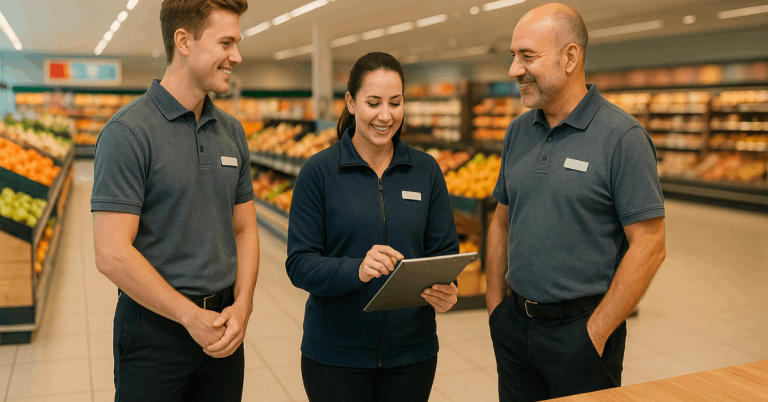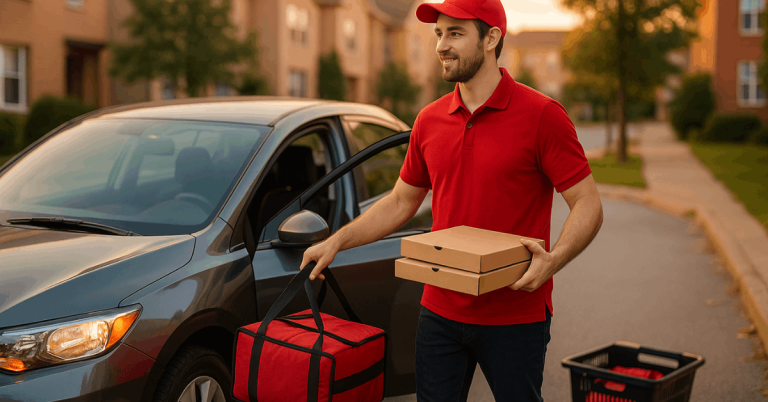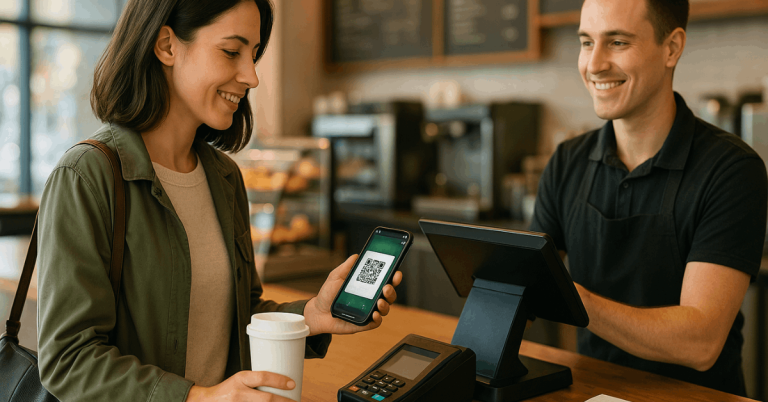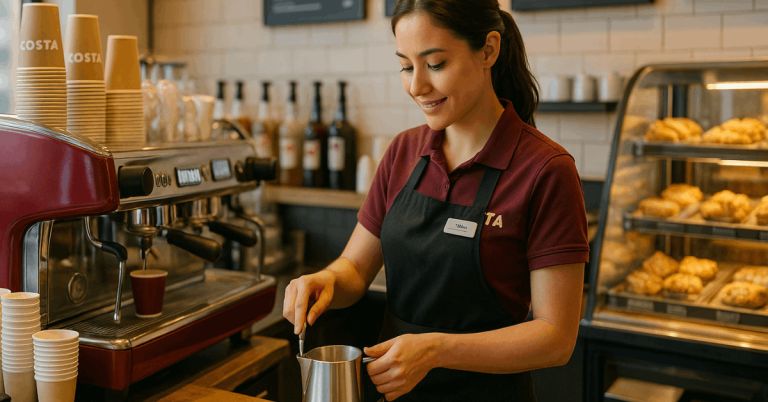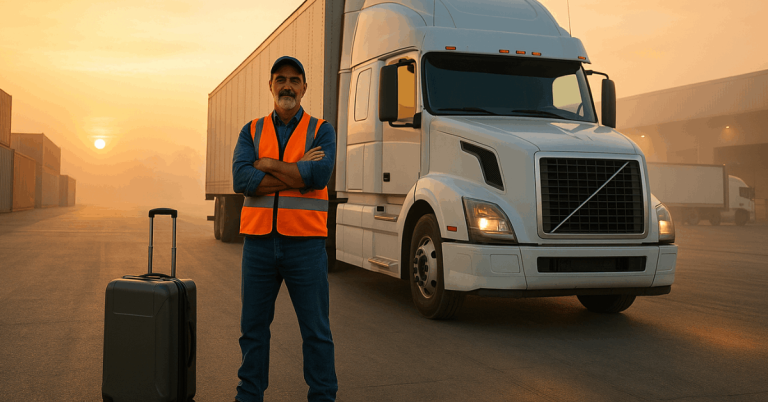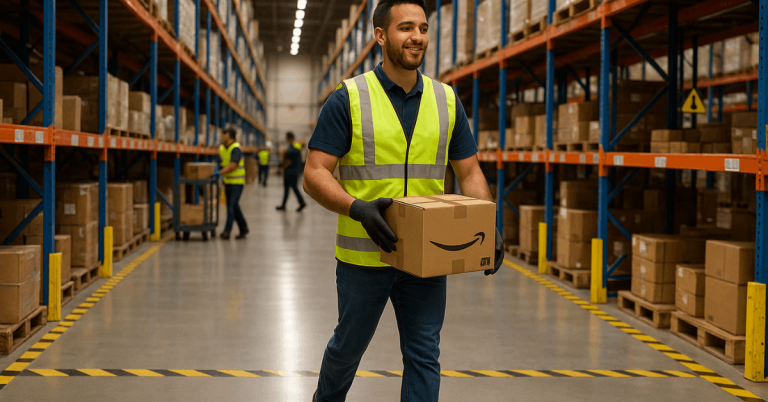In fast-growing last-mile networks, an Amazon Delivery Driver Career can be built either as a Delivery Service Partner (DSP) employee or an Amazon Flex independent contractor.
Clear differences in status, vehicles, schedules, and pay structures affect take-home income, and smart choices around shifts, routes, and expenses raise earnings further.
Most candidates start quickly after meeting baseline licensing, background, and smartphone criteria, then optimize blocks and routes once comfortable on the road.
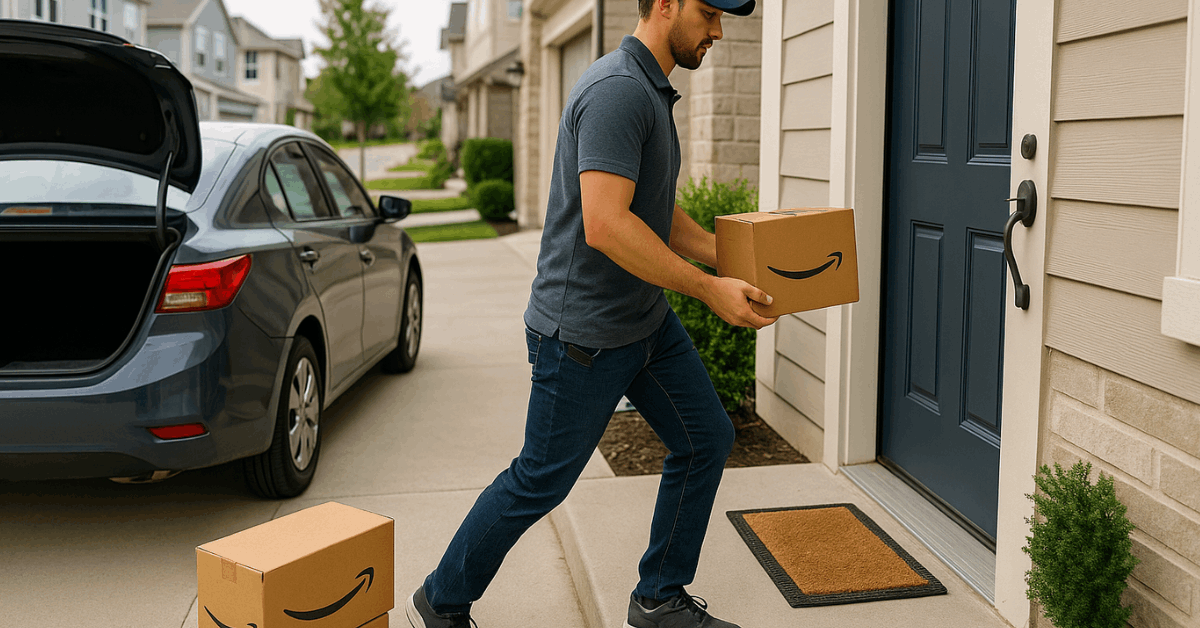
What Drivers Do Day to Day
Daily work centers on safe loading, scanning, and delivery across dense sequences, balancing speed with parcel care and concise doorstep interactions.
DSP drivers operate an Amazon delivery van on fixed shifts, often with steady weekly hours and a local service area. Flex partners select delivery blocks inside the app, use personal vehicles, and can vary hours to match seasonal peaks or personal goals.
Good pacing, clean handovers, and accurate photo confirmations protect ratings and reduce re-attempts, which keeps routes profitable and days predictable.
Career Paths and Pay Structure
A short, four-part lens helps compare options: employment model, vehicle, scheduling control, and how pay is calculated. DSP drivers join a local employer that contracts with Amazon, typically receiving steady schedules and potential overtime.
Flex contractors choose when to work by grabbing blocks, seeing payout before starting, and handling their own operating costs. Picking a path that matches risk tolerance and availability unlocks the best returns.
Local demand, holiday volumes, and peak season blocks can lift weekly totals when planned deliberately. Amazon lists typical Amazon Flex pay rates on its official pages, and DSP role pages outline minimum age and license expectations.
DSP Drivers
DSP drivers are employees of independent businesses that deliver for Amazon.
Common job posts require being 21+, a valid driver’s license, and passing background and motor-vehicle checks; benefits such as health coverage or paid time off are offered by the DSP, not Amazon directly, and vary by employer and location. Vans, fuel cards, and uniforms are usually provided.
Amazon Flex Drivers
In the U.S., Amazon states most delivery partners earn $18–$25 per hour, while UK pages commonly show £14–£18 per hour; actual earnings vary by city, demand, block type, tips on certain orders, and time to complete.
Smartphone requirements include a recent iPhone or Android; Amazon lists Android 12+ on its FAQ and, in some regions, 3GB RAM minimum on program pages.
Side-by-side at a glance:
| Driver type | Role status | Typical advertised pay | Vehicle provided? |
| DSP driver | Employee | Local job ads vary by market; steady hourly + overtime where applicable | Yes, Amazon-branded van (via DSP) |
| Amazon Flex | Independent contractor | US pages cite $18–$25/hour; UK pages cite £14–£18/hour | No, bring your own eligible vehicle |
Global Pay Snapshot
Pay varies significantly by country, city size, and program. Amazon Flex U.S. materials highlight $18–$25 per hour for most partners, with weekly totals driven by the number of blocks accepted and completed.
UK job listings and Amazon Flex pages commonly show £14–£18 per hour.
Australian Flex pages publish minimum per-block payouts by vehicle size, currently A$118 for a 4-hour sedan block, A$180 for a 6.5-hour large passenger vehicle block, and A$270 for an 8-hour cargo van block, illustrating how vehicle class influences block options and guaranteed block pay.
Expenses That Affect Take-Home Pay
Operating costs change the picture, especially for Flex partners using personal vehicles. Fuel, tires, brakes, wipers, and routine maintenance add up across dense city routes; insurance premiums and periodic registration also apply.
Smartphones, mounts, high-capacity power banks, and protective cases become essential work tools and should be budgeted.
Health, food, and family expenses remain constant even when blocks fluctuate, which argues for conservative expense planning and rainy-day buffers. DSP drivers avoid most vehicle costs because the Amazon delivery van is provided by the employer, though personal commuting and meals still factor into budgets.
Factors That Influence Earnings
Experience improves pacing, scanning accuracy, and parking choices, which compresses time-on-route and reduces re-attempts.
High-demand zones and dense urban stops usually elevate hourly returns through shorter drive times and easier consolidation. Schedules matter: late-afternoon, weekend, and holiday peak season blocks tend to post higher block payouts, particularly for Flex partners.
On the DSP side, overtime hours and bonus days can lift weekly totals during peak, while consistent attendance stabilizes route assignments and preferred start times.
Vehicle Requirements and Eligibility
Programs enforce vehicle eligibility rules to ensure capacity, safety, and weather protection. Flex in the U.S. lists a four-door, mid-sized sedan or larger, SUVs, vans, or trucks with covered beds, for Amazon.com parcel routes; Prime Now/Whole Foods criteria can differ by city.
Two-door cars and motorcycles are generally ineligible because parcel security and volume constraints make them impractical.
Android/iPhone compatibility, camera, GPS, and adequate storage space round out practical requirements. DSP drivers typically operate a large van supplied and maintained by the employer, which removes most personal vehicle risk.
How Vehicle Size Shapes Block Options
Australia publishes block models tied to vehicle class: sedans are assigned up to 4-hour blocks, large passenger vehicles run 6.5-hour blocks (including a 30-minute unpaid break), and cargo vans run 8-hour blocks.
The structure provides predictable delivery block length and guaranteed minimum block pay before departure, which simplifies income planning and fuel provisioning.
Core Requirements and Application Steps
Choosing DSP employment or Flex contracting determines the exact steps. A brief, structured checklist minimizes delays and keeps onboarding smooth.
- Meet baseline DSP driver requirements or Flex criteria, including minimum age (commonly 21+ for DSP), valid license, background screening, and smartphone compatibility confirmed in the app.
- Prepare identification and work authorization documents; ensure insurance details reflect the vehicle actually used for deliveries when contracting.
- Create an application profile (DSP job portals) or sign up through the Flex app; verify bank details for weekly payouts and enable notifications for open blocks.
- Complete onboarding, safety briefings, and route ride-alongs (DSP), or review Flex tutorials and pickup procedures before first block.
- Test equipment, a sturdy phone mount, high-capacity power bank, and weather-appropriate footwear, so scanning, navigation, and drop photos remain seamless during peak volumes.
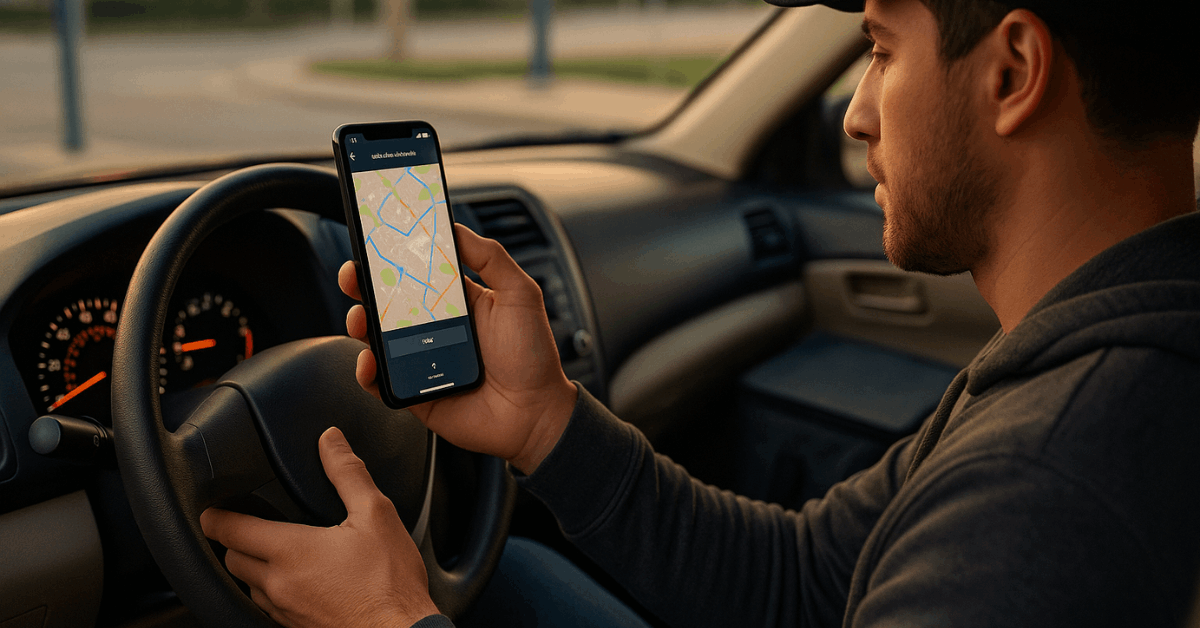
Maximizing Earnings: Practical Plays
Sharpening route flow and working when demand spikes drives results for both paths.
- Accept back-to-back blocks that minimize deadhead driving, then rearrange stop order only when local knowledge clearly improves efficiency.
- Keep an eye on event calendars, payday Fridays, and major retail promos, as these windows often trigger higher block postings and overtime.
- Many drivers adopt route optimization software, beyond default app routing, to sequence stops tightly on dense routes, trim idle time, and reduce re-attempts.
- Pair that with disciplined parcel staging inside the vehicle: heaviest items near the doors you’ll open first, fragile goods isolated, and the next ten stops pulled forward at every parking break.
- Amazon Flex also publicizes driver-support perks such as safety gear offers and a debit card program that can add fuel or everyday cash-back value, marginally improving net earnings.
Benefits and Working Conditions
DSP drivers receive Amazon driver benefits through their DSP employer, which may include hourly pay with overtime where applicable, paid time off, health coverage, and a provided vehicle, details vary by company and city and should be confirmed in the job offer.
Amazon employees in directly hired roles, such as certain fulfillment positions, have well-documented medical, time-off, retirement, and education perks; those pages don’t automatically apply to contractors.
Flex partners manage their own coverage but can leverage periodic promotions, in-app safety resources, and program perks. Safety training, regular vehicle checks, and lifting technique refreshers reduce injuries and help maintain day-to-day consistency on the road.
Professional Standards and Safety
Expectations around customer privacy, photo proof, safe driving, and respectful interactions remain non-negotiable. Adhering to delivery photo framing and obscuring sensitive details protects recipients and drivers alike.
Parking legally, avoiding blocked driveways, and documenting access constraints in app notes prevent complaints and re-attempts.
During night deliveries, reflective vests and headlamps improve visibility; Amazon has highlighted free safety items for Flex partners at times, which are worth claiming when available. Staying hydrated, pacing lifting, and using proper body mechanics protect long-term health during heavy peaks.
Conclusion
Strong outcomes in an Amazon Delivery Driver Career come from picking the right program, matching vehicle class to block options, and working when demand peaks.
DSP employment offers stability, an employer-provided van, and potential overtime, while Amazon Flex rewards schedule control and selective block bidding.
Keep expenses tight, invest in reliable phone gear, and refine parcel staging and stop order so every hour produces more completed deliveries with fewer re-attempts. For most candidates, this combination, right program, right hours, right routing, proves decisive for sustained, higher earnings over time.

